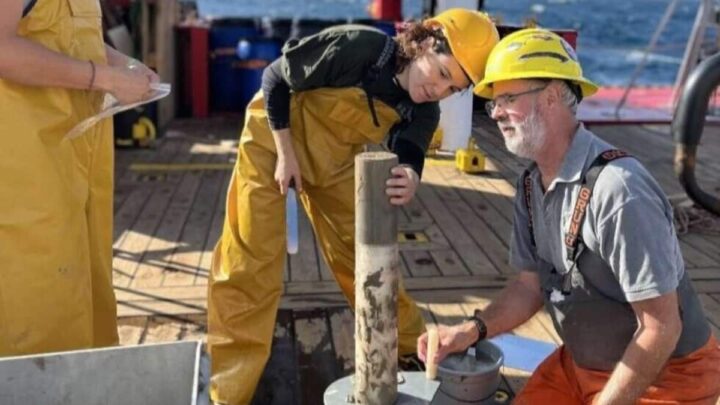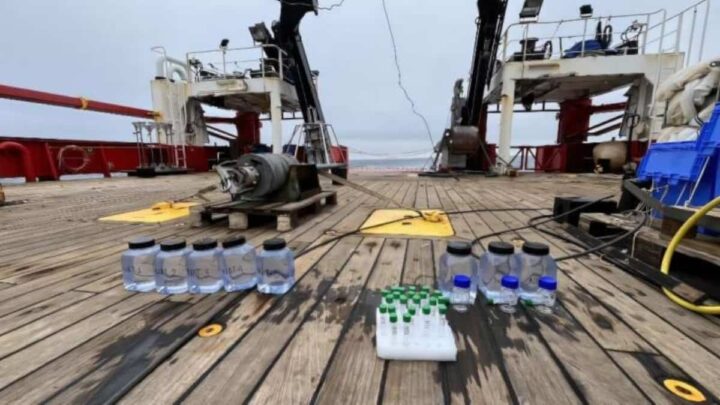A group of scientists collected new data on the phenomenon of “Atlantification” of the Arctic Ocean, a process related to climate change, during oceanographic research.
The BIOCAL international expedition, led by the Institute of Environmental Sciences and Technologies of the Autonomous University of Barcelona (ICTA-UAB), provided new data on the phenomenon of "Atlantification" of the Arctic Ocean.
This process is related to climate change and involves the progressive invasion of the Arctic polar ocean by Atlantic waters.
The team collected samples to study the change in marine biodiversity, via analysis of calcifying planktonic organisms. These, which form calcium carbonate shells and are particularly sensitive to ocean acidification and climate change, contribute to the regulation of atmospheric CO2 and seawater chemistry.

Members of the BIOCAL expedition collecting samples.
During the months of August and September, the oceanographic research vessel Sarmiento de Gamboa sailed from Vigo, in Spain, to Reykjavik, in Iceland, after having analyzed the archipelagos of the Azores (subtropical) and Svalbard (polar), analyzing the Atlantic oceans North and South Arctic.
During the trip, water and sediment samples were collected, as well as experiments carried out on sitein order to assess marine biodiversity and biogeography, and their role in the carbon cycle, with an emphasis on calcifying plankton.
Atlantic Ocean is changing the Arctic...
Research in regions of different latitudes, from the warmest areas of the Atlantic to the coldest waters of the Arctic, allowed the team to gather evidence of the impact of "Atlantification" on the physicochemical characteristics of water and maritime ecosystems.
The invasion by Atlantic waters is transforming the Arctic into an increasingly warmer and less saline ocean due to accelerated melting. Furthermore, this invasion is rapidly changing marine ecosystems and the distribution of Arctic species.
Explained Patrizia Ziverioceanographer at ICTA-UAB and scientific leader of the expedition.
This phenomenon modifies primary and secondary productivity, and allows species from more temperate latitudes to expand their habitat to the north, generating food competition and predation on Arctic species.

Samples collected by the BIOCAL expedition on the deck of the oceanographic research vessel.
In the Svalbard archipelago, scientists observed the three main calcifying groups (coccolithophores, shelled pteropods and foraminifers) at the limit of their usual geographic distribution area, as well as surface temperatures higher than the average of the last 22 years, in August and September.
The vast area studied on the expedition, from subtropical to polar regions, allowed scientists to observe the global footprint of climate change on the biogeography of the most common species of calcifying plankton.
This project builds on the evidence that the loss of marine biodiversity represents one of the greatest threats to the oceans. W
Anthropogenic climate change and environmental degradation are generating alarming effects, such as warming, acidification, stratification and deoxygenation of the oceans, which affect both small plankton and fish.
Source: pplware.sapo.pt


